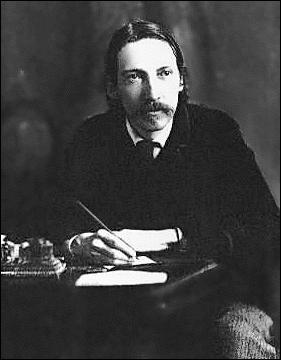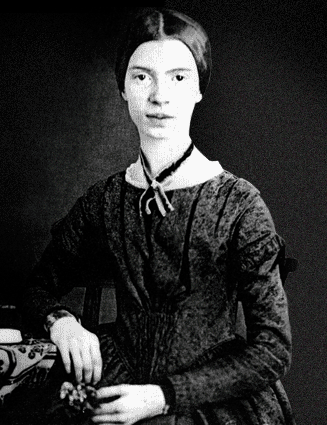Learning Refrain, Simile,
Metaphor &
Personification
 |
| Pied Piper--Armstrong-Browning Library, Baylor University, Waco, Texas |
Evelyn Smith
Ph. D. Texas Christian University, 1995
MS in Library Science, University of North Texas, 2012
This Web page is meant to supplement the middle-school and high school
language arts curriculum by teaching such poetic concepts as refrain, simile, metaphor, and
personification.
Poems that Use Refrain

Angelou, Maya. (2013). "Alone". PoemHunter.com. Retrieved from
http://www.poemhunter.com/poem/alone-6/
In this brief three stanza poem, the refrain falls at the end of the stanza.
In this brief three stanza poem, the refrain falls at the end of the stanza.
Frost, Robert. (2013). "Stopping by Woods on a Snowy Evening". Poetry Foundation. Retrieved from http://www.poetryfoundation.org/poem/171621
Here the refrain comes at the last two lines of the last
stanza.
Hughes, Langston. (2003).
"Dreams". PoemHunter.com.
Retrieved from http://www.poemhunter.com/poem/dreams-2/
Hughes uses the refrain twice for emphasis.
Hughes uses the refrain twice for emphasis.
 Stevenson, Robert Louis. (1913). "The Wind".
From A Child’s Garden of Verses
and Underwoods. Poem Hunter.com.
Retrieved from http://www.poemhunter.com/poem/the-wind-4/
Stevenson, Robert Louis. (1913). "The Wind".
From A Child’s Garden of Verses
and Underwoods. Poem Hunter.com.
Retrieved from http://www.poemhunter.com/poem/the-wind-4/
"The Wind" uses the refrain as a chorus, placing it at the end
of each stanza. Texas schools use
it as an example of personification and simile, although some of the
wording might not particularly appeal to today's middle school audience.
Yeats,
William Butler. "Brown Penny". William
Butler Yeats Poems. Famous Poets and
Poems.com. Retrieved from http://famouspoetsandpoems.com/poets/William_butler_yeats/poems/10173
Yeats' refrain
falls in the second to last line of the stanza.
Songs that Use Refrain
Foster, Stephen. "Oh, Susanna" Lyrics. You tube. Retrieved from http://www.youtube.com/watch?v=917Ept-tWdk
Link provides the audio version of song which listeners
can pair with a written version of the folk song.
Yankee Doodle Dandy. (n. d. ). You tube. Retrieved from http://www.youtube.com/watch?v=AwHvyqNDUvE
Yankee Doodle Dandy. (n. d. ). You tube. Retrieved from http://www.youtube.com/watch?v=AwHvyqNDUvE
Teachers can have part of the
class stand during the refrain while the other part of the class stands while
singing the lyric. Students should know that in songs, the refrain is often called the
"chorus".
"chorus".
Poems that Use Personification
Hendricks, S. (2010). Personification poems. Word Wizard.
Retrieved from http://www.mywordwizard.com/personification-poems.html
Contemporary poet furnishes a collection of poems that
use personification.
Other selections written by major poets that teach personification include the following selections:

Dickerson, Emily. “The Train” as found on Poem Hunter. (2013). Retrieved from http://www.poetryfoundation.org/poem/173524
Dickerson
uses verbs and a present participle normally attributed to humans to
describe the functions of a tree (lap, lick, step, pare, chase, and
complaining).
Frost, Robert. "Birches" as found on Poetry Foundation. (2013). Retrieved from http://www.poetryfoundation.org/poem/173524
Frost
doesn't build his entire poem around personification; however, he does
combine both personification and simile to make the birches act like
people:

And they seem not to break; though once they are bowed
So low for long, they never right themselves:
You may see their trunks arching in the woods
Years afterwards, trailing their leaves on the ground
Like girls on hands and knees that throw their hair
Before them over their heads to dry in the sun.
Wordsworth, William. "Daffodils" (attributed earlier under simile).
Dancing, whether by daffodils and waves in stanza one and three or the heart in stanza four, help organize the major theme of this lyric poem--memories of nature sustain the poet even when he is away from nature.
Wondering just who he should love, the poet throws a penny, presumably into a fountain, whereupon he allows the penny's "answer" to reflect his subconscious thoughts.
Poems that Use Simile
Wordsworth, William. (2013). "Daffodils". Poem Hunter.com. Retrieved from http://www.poemhunter.com/poem/daffodils/
Wordsworth’s "Daffodils" poem comes to mind as a poem that using “as” in a simile in the first line.
Burns, Robert. (2013). A red, red rose. Poem Hunter.com. Retrieved from http://www.poemhunter.com/poem/a-red-red-rose/
Web page presents Robert Burns’ “A red, red rose” as a classic example of personification.
Teaching Personification,
Refrain, & Simile
Teach personification with Mickey Mouse and hip hop (2011). Flocabulary.
Retrieved from
http://blog.flocabulary.com/teach-personification-with-mickey-mouse-and-hip-hop
http://blog.flocabulary.com/teach-personification-with-mickey-mouse-and-hip-hop
Web site effectively relates personification to popular culture.
Grimley, P. (n. d.). Sounds of language. Learning to Give.
Retrieved from http://learningtogive.org/lessons/unit26/lesson2.html
Grimley
teaches students how to identify rhythm, rhyme, refrain, alliteration, and
onomatopoeia through the use of tongue twisters, the classic American poem,
Vachel Lindsay’s “William Booth Enters into Heaven ” (Grimley furnishes link),
and the more contemporary poem written by comedian Adam Sandler,” Lunchlady
Land".
Lesson Plans for Simile
& Metaphor
Introducing metaphors through poetry! (n. d.). EDITEMENT. Thankfinity Community. National Endowment for the Arts. Retrieved from http://edsitement.neh.gov/lesson-plan/introducing-metaphors-through-poetry#sect-activities
High school-level lesson on simile and
metaphor uses Langston’s Hughes’ “Dreams”, Margaret Atwood’s “You Begin” and
Naomi Shihab Nye’s “Blood” to teach simile and metaphor as well as Dylan Thomas’
“Do Not Go Gentle Into That Good Night”, and Luis J. Rodriguez’s “The Concrete”,
which give students additional practice in identifying figurative language and
might also start a discussion of what makes it effective. Finally, students work of creating their own
metaphors and assessing their effectiveness.
Rogers, Denise. (n. d.). Funny simile poems. Funny Poems. The Children’s Place. Retrieved from http://betterlesson.com/lesson/27141/metaphors-and-similes
Introduce or review the use of similes by
working these humorous simile poems into a figurative language unit’s lesson
plans. After identifying the similes,
students can work in pairs, changing similes to metaphors.
A Simile and metaphor sample lesson plan for the teaching of simile and metaphor. (n. d.). Retrieved from http://volweb.utk.edu/Schools/bedford/harrisms/2poe.htm
United Kingdom Webpage aimed at secondary school students gives an outline for teaching simile and metaphor, providing links to a poetry worksheet to fill in the details. Not only do students pick out similes and metaphors, but they also change the similes to metaphors and the metaphors to similes.
Simile and metaphor. (2013, March 7). Kenn Nesbitt’s Poetry4kids.com Retrieved from http://www.poetry4kids.com/blog/news/simile-and-metaphor-poetry-lesson/
Lesson plan defines both simile and metaphor whereupon two exercises test the student’s knowledge. Exercise 1 requires students to identify comparative phrases taken from well-known poems and tell whether they are examples of simile or metaphor. Exercise 2 asks the students to then write five different similes about themselves.
Smith, Amber. (2013). Lesson: Metaphors and similes. Better Lesson. Retrieved from http://betterlesson.com/lesson/27141/metaphors-and-similes
Aimed at fifth graders, this lesson pairs
students that check each other on their understanding during the early part of the
lesson. After the pair reviews
information from the previous day’s assignment, the teacher models the finding
of similes and metaphors in the first
two lines of a poem displayed by an overhead projector whereupon the students
discuss the next five lines of the poem, identifying the similes and
metaphors. Later, each student puts to
use what he or she has learning by independently completing a worksheet on
similes and a worksheet on metaphors.
Simile & Metaphor
Interactive Games
Do you know your metaphors. (n. d.). Dragonsville. Kidsonthenet.org. Retrieved from http://www.kidsonthenet.org.uk/dragonsville/metaphor1.htm
British Website familiarizes ESL students
with common idiomatic English metaphors.
Figurative
Language Arts. (2007, March 11). Gamequarium. Retrieved from
Most of
the links to games require a subscription and a plug in, although there is a
30-day trial period; however, two games, Fling the Teacher and Drag and Drop
Metaphors don’t.
- Fling the teacher is an interactive program that teaches the user to recognize simile, homograph, homophone, idiom, and metaphor.
- Drag and Drop Metaphors allows the user to recognize metaphors by matching the first and last parts of a sentence.
Figurative
Language. (n.d.). Spelling City. Retrieved from http://www.spellingcity.com/figurative-language.html
Interactive
word games whose vocabulary matches that of the average elementary, middle
school, and high school student familiarizes users with metaphor, simile,
idiom, hyperbole, and personification.
Accompanying worksheets test what they have learned by accessing the
games.
Simile
or Metaphor Jeopardy. (2011, February).
Super Teacher Tools. Retrieved from
Contestants play Jeopardy by determining
whether an answer is an example of either a simile or metaphor. “Alex, I’ll
take “No man is an island for $20?”
Help for Elementary & Middle School Language Arts
Resources include grammar, reading comprehension, spelling, and writing games as well as word games and puzzles, quizzes, videos, ESL help, and jokes and riddles.
Poem Hunter. (2013). Retrieved from http://www.poemhunter.com/song/lunchlady-land/
Site provides links to almost all the American and British poets United States students study in language arts and English classes in middle school and high school as well as in literature survey classes at the university level.
Lansky, B. (2000).
A fun way to teach similes.
Poetry Teachers.com. Retrieved
from
http://www.poetryteachers.com/poetclass/lessons/teachsimiles.html
http://www.poetryteachers.com/poetclass/lessons/teachsimiles.html
Lansky furnishes a predictable poem using a collection of well-known clichés that teach the use of simile. He then suggests that the instructor reproduce the poem with the last two words left blank.
Wroblewski, M. (2013).
How to teach personification for kids. eHow. Retrieved from
http://www.ehow.com/how_8685163_teach-personification-kids.html
http://www.ehow.com/how_8685163_teach-personification-kids.html
Wroblewski furnishes instructions of how-to teach
personification in a step-by-step plan that relates this poetic device to the
students’ everyday lives.

Waco-McLennan County
Library Patrons
McGregor area
residents who hold a Waco-McLennan County Public Library card may also access literary
criticism subscription databases Online
using the library card number and a password, including Book Review Digest
Plus, Essay and General Literature Index, Gale Virtual Reference Library, Gale
Literature Databases, Humanities Index, Literature Reference Center (EBSCO),
EBSCO E-books, Play Index, Short Story Index, and Twentieth-Century Poetry.
Other residents of
Texas who hold a library card from a library that is part of the TexServe
consortium can also access these databases Online.
APA & MLA Guidelines
for Research Papers

Turn
to the Purdue Online Writing Lab:
Vetted Literary Criticism
Websites Online for
High School &
University Students
Harris, Robert A.
(2013, January 19). Virtual Salt: A Handbook of Rhetorical
Devices. Retrieved from http://www.virtualsalt.com/rhetoric.htm
Harris defines most terms students will come in contact with in first-year college and university composition classes.
Lancashire, Ian. (2002). Prose and
Verse Criticism of Poetry. University of Toronto. Retrieved from https://tspace.library.utoronto.ca/html/1807/4350/indexcriticism.html
Lancashire offers commentaries on a selected list of poems as well as furnishing criticism of poetry by a list of famous poets.
Literary Criticism.
(2012). Ipl2. Drexel College of
Information Science. Retrieved from http://www.ipl.org/div/litcrit/
Users can browse criticism by author's names and the work's name for almost all of European literature as well as Japanese and Chinese literature. Additionally, the Web site provides a link to an Online Literary Criticism Guide.
Poets.org.
(2013). Academy of American Poets. Teaching Resource Center. Retrieved from
http://www.poets.org/page.php/prmID/83
Students and educators can access a plethora of links to poetry and language arts Websites and government resources. They can also view curriculum units, lesson plans, educational technology Websites, including Blackboard, as well as Web pages for Writers in Schools programs, conference workshops, and literary festivals.
